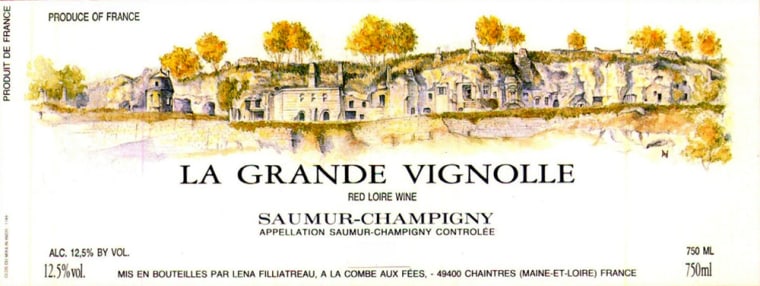As warm weather returns I start to think more about lighter wines, both red and white. One region that deserves far greater attention in this context is France’s Loire Valley, which, as a travel destination, is most famous for its spectacular medieval castles.
As far as wine is concerned, I suspect that most people will think of the Loire as a white wine area — that is, if they know the region at all. The more familiar wines include sauvignon blancs like Sancerre and Pouilly Fumé, chenin blancs such as Vouvray and Savennières, and Muscadet from the western Loire near the Atlantic Ocean, made from the melon de Bourgogne grape.
Then there are the reds. Can you name any of them? The most important red grape in the Loire Valley, which lies south and west of Paris and courses along the Loire River to the Atlantic, is the cabernet franc. There is also limited production of pinot noir, gamay and côt, as malbec is known in the Loire, all deriving a unique character from the area’s mineral-rich soils.
In the Loire, cabernet franc is not merely a blending grape, as it is for the most part in Bordeaux and the Napa Valley; on the contrary, any serious discussion of Loire reds is going to be mainly about cab franc. Which brings me to a beautiful example I have just tasted — a 2005 Saumur-Champigny from Domaine Filliatreau, a large estate of more than 100 acres near the city of Saumur in the western Loire.

The Filliatreaus — Paul and his son Fredrik — produce a number of cab francs, and this one is called La Grande Vignolle, named for a top vineyard site. The domaine, by the way, is moving toward completely organic farming. The conventional thinking is that such Loire reds can be enjoyed while very young. But to be honest, I have often found them enclosed and austere when just released, their fruit not yet quite emerged to the point where it would be with a year or two more of bottle age. This is not an issue with La Grande Vignolle.
This fresh, medium-bodied wine (for which I paid $17) charmed me from the first breath with its aromas of red berry and a “dusty” quality I liken to the subtle smell of powdery confectioners sugar. Tastes are deeper, with black cherry and blackberry notes and touches of mocha, earth and minerals from limestone-rich soils. There is great length, meaning that the wine lasts a long time in the back of the mouth after you swallow it, allowing you to savor it. Remarkably, this dimension is achieved without exposure to oak — fermentation and aging are done completely in stainless steel tanks. Adding to its complexity may be the fact that the wine is not filtered.
Served slightly chilled, it provide a refreshing counterpoint to a range of simply prepared dishes, from grilled salmon and broiled or grilled chicken, to steaks and chops served on the patio. On that note, let’s raise a glass to summer — and to making the reds of the Loire Valley a part of your warm-weather dining. (La Grande Vignolle is imported by Louis/Dressner Selections, New York.)
Edward Deitch's wine column appears Wednesdays. He welcomes comments from readers. Write to him at